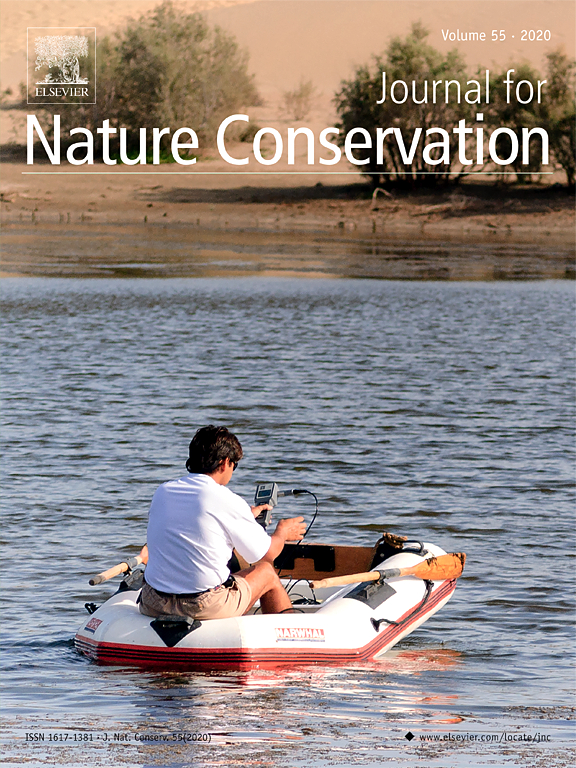Ver ítem
- xmlui.general.dspace_homeCentros Regionales y EEAsCentro Regional Buenos Aires NorteEEA Delta del ParanáArtículos científicosxmlui.ArtifactBrowser.ItemViewer.trail
- Inicio
- Centros Regionales y EEAs
- Centro Regional Buenos Aires Norte
- EEA Delta del Paraná
- Artículos científicos
- Ver ítem
A small protected area facilitates persistence of a large carnivore in a ranching landscape
Resumen
Assessments of the role that small (<500 km2) protected areas play in conservation of large carnivores in landscapes where the species are persecuted are scarce. Using camera-trap sampling we estimated puma (Puma concolor) population abundance, site use intensity, and relative abundance of prey in Lihué Calel National Park (320 km2) and two neighboring livestock ranches in central Argentina. We concurrently assessed rancher attitudes towards puma in
[ver mas...]
Assessments of the role that small (<500 km2) protected areas play in conservation of large carnivores in landscapes where the species are persecuted are scarce. Using camera-trap sampling we estimated puma (Puma concolor) population abundance, site use intensity, and relative abundance of prey in Lihué Calel National Park (320 km2) and two neighboring livestock ranches in central Argentina. We concurrently assessed rancher attitudes towards puma in relation to livestock predation by this carnivore and retaliation by ranchers in the ranching landscape surrounding the protected area. At least 3-8 adult pumas were recorded within the park while no individuals were detected on private ranchland. Site abundance within the park was positively related to the distance from the park boundary. The overall prey base inside and outside the park was similar. Sixteen out of 17 ranchers reported livestock losses due to puma predation and 76% of ranchers employed lethal control of carnivores to avoid livestock losses, resulting in 16 pumas killed during 2007-2009 in the surveyed ranches. The avoidance by pumas of the park´s border, the absence of puma detections on ranches, the similar prey availability inside and outside the park, and the positive association between rancher’s negative perceptions and persecution of pumas suggests that puma occurrence is depressed in ranchlands as a result of human-induced mortality. Our results demonstrate how small protected areas can play a role in maintaining large carnivores within productive landscapes despite harsh persecution. We emphasize the positive role of ranches that do not persecute pumas and the need to facilitate the coexistence between puma and people for the long term conservation of this felid in ranching landscapes.
[Cerrar]

Autor
Pereira, Javier Adolfo;
Thompson, Jeffrey;
Di Bitetti, Mario S.;
Fracassi, Natalia;
Paviolo, Agustín;
Fameli, Alberto F.;
Novaro, Andrés J.;
Fuente
Journal for Nature Conservation : 125846 (Available online 22 May 2020)
Fecha
2020-05
Editorial
Elsevier
ISSN
1617-1381
Formato
pdf
Tipo de documento
artículo
Palabras Claves
Derechos de acceso
Embargado
 Excepto donde se diga explicitamente, este item se publica bajo la siguiente descripción: Creative Commons Attribution-NonCommercial-ShareAlike 2.5 Unported (CC BY-NC-SA 2.5)
Excepto donde se diga explicitamente, este item se publica bajo la siguiente descripción: Creative Commons Attribution-NonCommercial-ShareAlike 2.5 Unported (CC BY-NC-SA 2.5)

